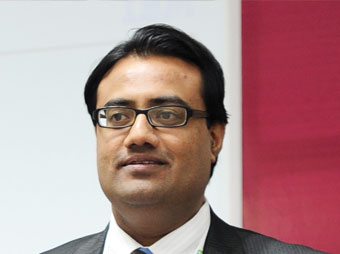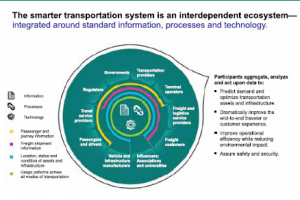
Emphasis on multi-modal public transport and wide-ranging policy reforms are essential to meet challenges of urban growth
N S N Murthy, General Manager, Smarter Planet Solutions, ISA, IBM
 In order to build a smarter planet, an efficient urban transport system is a must. Success of a smart transport system will be dependent on deeper, more holistic and informed planning, collaboration and execution. Transportation service providers will need to become smarter and planning will have to focus upon encouraging public transport, as it is more economical, environment friendly and energy efficient solution as compared to private transport.
In order to build a smarter planet, an efficient urban transport system is a must. Success of a smart transport system will be dependent on deeper, more holistic and informed planning, collaboration and execution. Transportation service providers will need to become smarter and planning will have to focus upon encouraging public transport, as it is more economical, environment friendly and energy efficient solution as compared to private transport.

Planning is a very important aspect of urban transport, and an integrated, multi-modal transport system is of critical importance to urban areas. Consider the example of Argentina and Columbia, where they have integrated not only the public transport system, but also the taxis and autos into the multi-modal system. In order to ensure true success of a multi-modal system, it is important that there is not even a kilometre’s gap between two modes of transport.
Policy Reforms
At a policy level, urban planning in India still does not include transport. About a dozen-odd Departments are involved in transport-related matters. The traffic department, municipal bodies, PWD etc., all work independently and in a disconnected matter. Take Bangalore for example, the Municipal Corporation decides upon parking spots, which might be kilometres away from the actual place of work or residence. The new Metro system is 1.5 km away from the single most populated industrial location in the city – Embassy Golf Links, where roughly 60,000 people work. In to cover this 1.5 km between the Metro station and the office area, one has to take a U-turn, which takes four hours to negotiate due to the traffic. It is difficult to appreciate the planning that would have gone into such design.

 Transportation is not taught in most urban planning courses today. It is essential that the future urban planners are exposed to transportation-related issues and also exposed to technology that can be helpful in devising solutions for the most complex urban problems that we are going to face.
Transportation is not taught in most urban planning courses today. It is essential that the future urban planners are exposed to transportation-related issues and also exposed to technology that can be helpful in devising solutions for the most complex urban problems that we are going to face.
All Indian cities above 5 lakh population need to have a multimodal transport policy and procedure in place. There are 50 such cities in India today and we need not wait for the future. Major cities such as Delhi and Bangalore waited for so long and nothing happened. Today, when one gets off from the Metro at Gurgaon, a rickshaw is needed in order to reach the IBM office – such is the state of infrastructure development. This experience should not be replicated in our growing cities and we must be ready for the future.
If needed, there should be no hesitation in taking hard decisions. In Stockholm, citizens themselves voted to impose a congestion charge on private transport, and also decided upon the quantum of the levy. Whatever money is collected trough this levy is used for building skywalks, bike lanes, additional public transport and so on. It has also helped Stockholm become one of the greenest cities in Europe.
Be a part of Elets Collaborative Initiatives. Join Us for Upcoming Events and explore business opportunities. Like us on Facebook , connect with us on LinkedIn and follow us on Twitter, Instagram.











